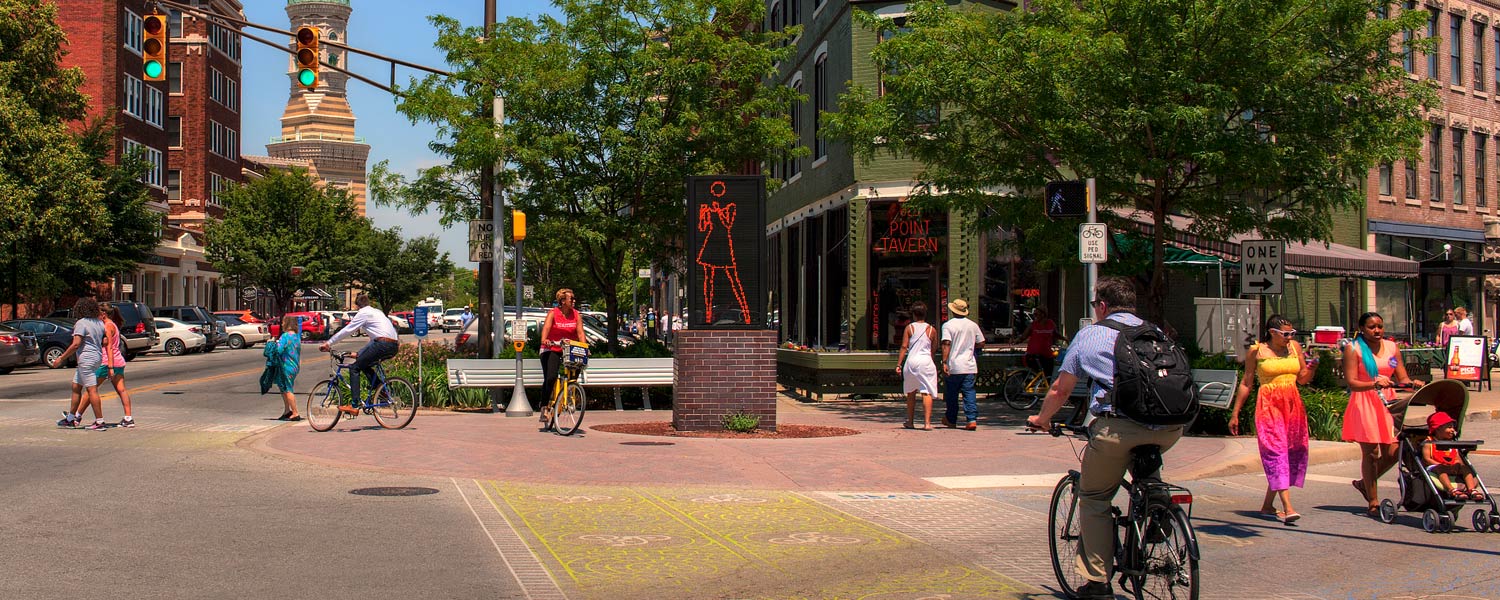In 2003, Mayor moved quickly to elevate the status of Indianapolis’ cultural sector by forming the Indianapolis Cultural Development Commission. The Commission established the Cultural Tourism Initiative to enhance public art and cultural districts, and to market Indianapolis as a cultural destination. To further this vision, Peterson also enlisted the , , and Indianapolis Downtown, Inc. (IDI) (later known as ). The and provided funding.

Former deputy mayor Keira Amstutz executed Mayor Peterson’s vision. She targeted Indianapolis’ museums and attractions as compelling reasons to visit the city and championed Peterson’s call to focus on and frame the city’s existing authentic neighborhoods as cultural districts. These districts bore a similarity to those in other major metropolitan cities. Because of the proximity of many of the cultural districts to downtown, IDI became the logical choice as a collaborator. The Corsaro Group, RLR Associates, Three Sixty Group, and other experts finished off the group of strategic partners.
Over the course of five years, the group agreed on the fundamental effort to “strengthen Indianapolis and Central Indiana as a unique destination to attract new visitors by facilitating the growth of “cultural districts” or hubs which offer a critical mass of cultural activities.” The team designed and implemented a pilot program to develop cultural district criteria and a self-nominating process to select prospective districts in Indianapolis. A neighborhood’s designation as a cultural district hinged on whether it had and supported a cultural, business, or neighborhood association; offered a critical mass of cultural and hospitality events; attracted a critical mass of visitors; maintained a reasonably walkable boundary; demonstrated collaborative associations; and had a commitment to basic customer service, safety, operations, and beautification standards.
A Cultural Districts Steering Committee reviewed and selected self-nominated Village, , , , and the as official Indianapolis Cultural Districts.
had been included as part of The Canal and White River State Park District, a decision that Indiana Avenue leaders appealed in 2004. IDI and the Cultural Development Commission agreed to regard Indiana Avenue as a separate district and it was added to the roster, increasing the number of official Cultural Districts to six. In 2014, became the city’s seventh Cultural District.
Each district received vital advice to ensure adherence to a cultural district plan with benchmarks to measure success, IDI and its partners worked with each district’s lead organization, cultural and hospitality partners, stakeholders, and neighbors. Each cultural district was required to inventory its cultural and hospitality assets, determine its strengths and weaknesses, assess how to develop culturally, and evaluate marketing priorities. The consulting team also applied for a Cultural Tourism grant focusing on one or more key priorities.
A concerted marketing campaign produced Cultural District logos, tag lines, key marketing messages, websites, and wayfinding signage. District boosters, city stakeholders, and residents demonstrated their enthusiasm to implement their shared vision. The Cultural Districts Real Estate Working Group attracted an eclectic mix of new restaurants, shops, and more. The installation of commissioned public art served as gateways to each Cultural District. Each district emerged with distinguishable attributes to draw attention to its neighborhood without competing with and drawing focus away from other cultural districts.

Help improve this entry
Contribute information, offer corrections, suggest images.
You can also recommend new entries related to this topic.